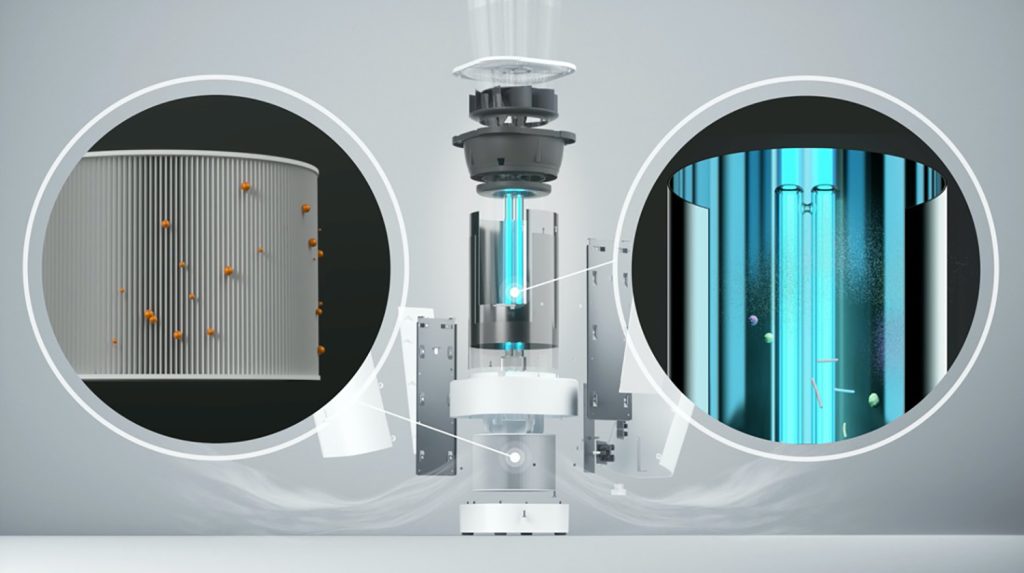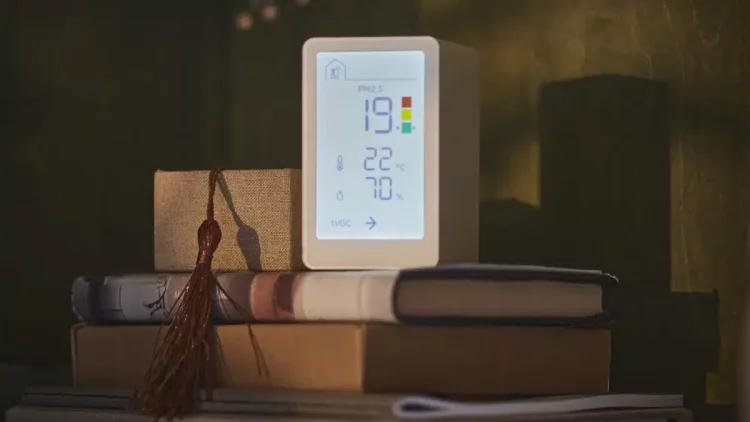Introduction: The Importance of Clean Indoor Air for Overall Health
In recent years, there has been a growing awareness about the impact of indoor air quality on human health and well-being. We spend up to 90% of our time indoors, and yet, many of us overlook the quality of the air we breathe within our homes, offices, and other indoor spaces. Poor air quality has been linked to a variety of health problems, ranging from respiratory issues and allergies to headaches and fatigue. This is particularly concerning as pollution, allergens, and harmful particles can accumulate indoors, sometimes even at higher levels than outdoors.
The need for cleaner indoor air has never been more pressing, and as a result, air purification technologies have advanced dramatically in recent years. From HEPA filters to smart air quality monitors, innovations in air purification are helping to tackle indoor pollution in ways that are more efficient, sustainable, and accessible. In this article, we’ll explore five cutting-edge air purification technologies that are making indoor spaces healthier, more comfortable, and conducive to better well-being.
HEPA Air Purifiers: Removing Pollutants from the Air in Your Home
One of the most widely used and trusted technologies for improving indoor air quality is the HEPA filter (High-Efficiency Particulate Air). HEPA filters have become a standard in air purification, particularly for people with asthma, allergies, or respiratory issues.
- How HEPA Filters Work: HEPA filters are designed to capture tiny particles—such as dust, pet dander, pollen, mold spores, and even some bacteria and viruses—that can be harmful to human health. These filters use a dense network of fibers to trap airborne pollutants as they pass through the filter, ensuring that only clean air is expelled back into the room.
- Benefits of HEPA Air Purifiers: HEPA air purifiers are highly effective at reducing allergens and other harmful particles from indoor air. Studies show that HEPA filtration can significantly reduce symptoms of asthma and allergies, improve sleep quality, and create a healthier overall living environment. Furthermore, because HEPA filters capture particles as small as 0.3 microns with 99.97% efficiency, they can even remove the fine particulate matter that contributes to poor air quality in urban environments.
- Challenges to Consider: While HEPA filters are effective, they are not without limitations. They do not remove gases or chemicals, such as volatile organic compounds (VOCs), which can contribute to poor indoor air quality. Additionally, HEPA filters need to be replaced regularly to maintain their efficiency, which can add to maintenance costs. However, for those looking to tackle particulate matter, HEPA technology remains a top choice.

UV-C Sanitizing Tech: Using Light to Kill Bacteria and Viruses in the Air
While HEPA filters focus on removing physical particles from the air, UV-C sanitizing technology uses ultraviolet light to kill or inactivate harmful microorganisms such as bacteria, viruses, and mold spores. UV-C light has been used in medical settings for decades to disinfect air and surfaces, and now this technology is being adapted for home use.
- How UV-C Technology Works: UV-C light operates at a specific wavelength (between 200 to 280 nanometers), which damages the DNA or RNA of microorganisms, rendering them unable to reproduce or infect. Air purifiers equipped with UV-C lamps emit this light within the unit, passing air through the chamber where the harmful pathogens are exposed to the radiation and neutralized.
- Benefits of UV-C Sanitizing Tech: UV-C air purifiers are particularly effective at killing bacteria, viruses, and mold spores that are too small to be captured by HEPA filters. This makes UV-C technology a powerful tool for disinfecting the air, reducing the risk of airborne diseases, and preventing the spread of illnesses, such as the flu or common cold. Additionally, UV-C lights do not require replacement filters and can be more energy-efficient compared to traditional filtration systems.
- Challenges to Consider: UV-C light can be harmful to humans and animals if directly exposed, so air purifiers with UV-C lamps need to be used properly in a safe, enclosed space. The effectiveness of UV-C technology also depends on factors like the intensity of the light and the exposure time, which is why these units often need to be placed in the center of a room for maximum coverage. Additionally, UV-C air purifiers may be most effective when combined with HEPA filters for optimal air purification.
Smart Air Quality Monitors: Real-Time Tracking of Indoor Air Quality
To truly optimize indoor air quality, homeowners need to be able to monitor it in real-time. Smart air quality monitors have become a popular solution, providing users with instant feedback on the level of pollutants in the air, and offering insights into how to improve it.
- How Smart Air Quality Monitors Work: These devices use various sensors to measure common indoor air pollutants, such as particulate matter (PM2.5 and PM10), volatile organic compounds (VOCs), carbon dioxide (CO2), and humidity levels. The data is then transmitted to a smartphone app or connected device, where users can track the status of their indoor air in real-time.
- Benefits of Smart Air Quality Monitors: Smart monitors allow homeowners to keep track of their indoor environment and adjust their behaviors accordingly. For example, if the monitor detects high levels of CO2 or VOCs, users can open windows for ventilation, use an air purifier, or take other actions to improve air quality. Many smart monitors also integrate with other smart home devices, like air purifiers, to automatically adjust settings based on real-time readings.
- Challenges to Consider: While smart monitors provide valuable data, their effectiveness depends on the accuracy of the sensors. Low-cost models may not provide reliable measurements, so it’s important to choose a high-quality device. Additionally, although they can track pollutants, they don’t actually remove them from the air, meaning that you’ll need a complementary air purifier for best results.
Biophilic Design: Integrating Plants and Nature into Indoor Spaces for Cleaner Air
Biophilic design is an emerging concept that incorporates natural elements, such as plants, water features, and natural light, into indoor environments to improve health, productivity, and overall well-being. Certain plants have been shown to be particularly effective at improving air quality by absorbing carbon dioxide and releasing oxygen.
- How Plants Purify Air: Some plants are particularly good at removing harmful toxins, like benzene, formaldehyde, and trichloroethylene, from the air. The process, known as phytoremediation, occurs when plants absorb pollutants through their leaves and roots, effectively filtering the air. Popular air-purifying plants include spider plants, peace lilies, and snake plants.
- Benefits of Biophilic Design: In addition to improving air quality, plants in indoor spaces have been shown to reduce stress, increase productivity, and promote mental well-being. Incorporating greenery into your home not only creates a healthier atmosphere but also fosters a connection to nature, which has numerous psychological benefits. Biophilic design is an aesthetically pleasing, natural way to improve air quality while enhancing the comfort of your living space.
- Challenges to Consider: While plants can help purify the air, their capacity is limited, and they should be seen as a complementary solution rather than a primary one. Over-watering or neglecting plants can also lead to mold or mildew issues, which could worsen indoor air quality. Nevertheless, with proper care, plants can be a beautiful, natural addition to your indoor air purification strategy.
Air-Purifying Paint: Eco-Friendly Paints That Help Improve Air Quality
An innovative product that combines both aesthetic and environmental benefits is air-purifying paint. This type of paint is formulated with substances that absorb harmful chemicals and pollutants in the air, such as VOCs, and neutralize them.
- How Air-Purifying Paint Works: Air-purifying paints contain photocatalytic properties, which react with light to break down harmful substances like formaldehyde and VOCs, turning them into harmless compounds. These paints are often infused with titanium dioxide, a compound that helps to oxidize pollutants when exposed to light, effectively cleaning the air in the room.
- Benefits of Air-Purifying Paint: Using air-purifying paint in your home can help reduce indoor air pollution without the need for expensive equipment. These paints are ideal for spaces that are difficult to ventilate, such as basements, bathrooms, or kitchens. Additionally, air-purifying paint can last for years, offering long-term benefits for improving indoor air quality.
- Challenges to Consider: The effectiveness of air-purifying paint depends on the amount of light in the room, as the photocatalytic process is light-dependent. While these paints do help reduce VOCs, they cannot remove particulate matter or biological contaminants, so they should be used in conjunction with other air purification methods for comprehensive results.
Conclusion: How Air Purification Tech Is Improving Wellness Through Cleaner Air
As indoor air quality continues to impact health and well-being, air purification technologies are evolving to offer more effective, innovative, and accessible solutions. From HEPA filters and UV-C sanitizing tech to smart monitors and biophilic design, homeowners now have a variety of options to create cleaner, healthier indoor spaces. By integrating these technologies, we can significantly reduce indoor pollutants, prevent the spread of harmful microorganisms, and promote overall wellness.
As technology continues to advance, the future of air purification looks promising, with new, even more efficient solutions on the horizon. Cleaner air at home isn’t just a luxury—it’s essential for a healthier, more comfortable life.


















































Discussion about this post